Qing Dynasty Daoguang Blue-and-White “Crossing-the-Wall Dragon” Pattern Dish | A Relic from the Imperial Kiln, Radiating the Auspicious Qi of the Dragon
[Collection Overview]
This is a classic blue-and-white porcelain piece from the Daoguang period (1821 – 1850) of the Qing Dynasty. The dish has a regular shape, with a delicate and firm body and a glaze as smooth and shiny as jade. In the center of the dish, a coiling dragon soaring through the clouds is painted in blue-and-white. The dragon’s body twists and turns, extending from the center of the plate across the rim to the outer wall, forming the unique “crossing-the-wall dragon” pattern. This pattern showcases the exquisite craftsmanship and imperial aesthetics of the imperial kilns in the mid-Qing Dynasty. The blue-and-white pigment has a rich and vivid color with distinct shades, providing valuable physical evidence for the study of the blue-and-white porcelain craftsmanship and the evolution of dragon patterns during the Daoguang reign of the Qing Dynasty.
[Craftsmanship Analysis]
1. Exquisite Body and Glaze, Exceptional Texture
The dish is made of a mixed body material of kaolin and porcelain stone, which has been refined through multiple washings. The body is tightly packed and delicate, with a light and appropriate weight when held. The glaze is a transparent blueish-white glaze. After high-temperature firing, it becomes smooth, shiny, and shows a bluish tint in white, creating the classic “blue and white contrast” charm. The glaze has fine and natural cracks, which have remained intact after nearly two hundred years.
2. Rich Layers in Blue-and-White Painting
High-quality Zhejiang pigment is used for the blue-and-white, which has a rich and stable color, presenting the charm of the “Xuande blue” with a deep blue and purplish hue. In terms of painting techniques, “fen shui cun” (a method of applying ink in Chinese painting) and “dian ran” (dotting and dyeing) are combined. The dragon scales are outlined with fine mesh patterns and then shaded layer by layer to show a three-dimensional effect; the dragon claws are powerful and the fingertips are as sharp as hooks; the dragon whiskers are delicate and floating, moving naturally with the clouds. The cloud patterns are outlined with smooth lines, and the internal filling has varying shades, creating a sense of billowing clouds.
3. Ingenious Design of the “Crossing-the-Wall Dragon” Pattern
The “crossing-the-wall dragon” is a classic pattern in the official kilns of the Ming and Qing Dynasties, symbolizing “the dragon soaring across the four seas with an indomitable spirit.” In this dish, the dragon’s body extends from the center of the plate to the rim and then crosses the wall to connect with the outer wall decoration. The composition requires a seamless connection between the inside and outside of the plate, which places extremely high demands on the painter’s composition ability and the stability of the firing process – a slight deviation can lead to the breakage or deformation of the pattern. The smooth transition and continuous lines of the dragon’s body on this dish fully demonstrate the proficiency of the craftsmen at that time.
[Pattern Symbolism]
The dragon is the most auspicious beast in Chinese traditional culture, symbolizing authority, nobility, and good fortune. The “crossing-the-wall dragon” pattern further implies “the flying dragon in the sky, bringing continuous blessings.” In the past, it was often seen on the utensils used by the imperial family and nobles, expressing the wishes of national peace and the eternal stability of power. The auspicious clouds surrounding the dragon in the dish complement each other, symbolizing “clouds follow the dragon, and winds follow the tiger,” representing the harmony between heaven and earth and the blessings of both wealth and rank.
[Historical and Collectible Value]
The Daoguang period was in the mid-late Qing Dynasty. The blue-and-white porcelain of this period continued the delicate style of the Qianlong and Jiaqing periods while showing the simple and dignified characteristics of the era. The “crossing-the-wall dragon” pattern, as a landmark pattern of the official kilns of the Ming and Qing Dynasties, has always been highly valued by collectors. This dish has a regular shape, clear patterns, and the color and painting craftsmanship of the blue-and-white are among the best of the same period. If it is well-preserved (please refer to the detailed pictures for the specific condition), it is truly an excellent collectible of blue-and-white porcelain from the mid-late Qing Dynasty. It is suitable for display in a study or an antique cabinet, or as an important part of an Oriental art collection system.
[Collection Specifications]
-
Era: Daoguang period (1821 – 1850) of the Qing Dynasty
-
Material: Kaolin porcelain body, underglaze blue-and-white
-
Shape: Dish with an open mouth and a shallow belly
-
Remarks: Please refer to the pictures or consult our customer service for the specific size, bottom mark, and detailed condition.
[Collection and Maintenance Suggestions]
-
Avoid strong vibrations or collisions to prevent the expansion of the glaze cracks or damage to the body.
-
Store it in a dry and well-ventilated environment, away from direct sunlight and humid places.
-
When cleaning, gently wipe it with a soft dry cloth. Do not use chemical cleaners or hard brushes.
-
As an antique collection, it is recommended to display it with a dust-proof glass cover, which can not only protect the collection but also facilitate viewing.
VirtuCasa Promise: All antique collections are guaranteed to be genuine and sourced from reliable channels. The pictures are taken without retouching to present the real state of the collections. If you need more detailed pictures or professional appraisal opinions, please feel free to contact our art consultant team at any time.
Note: This is an antique collection, and it may have traces of use from the era. Please refer to the actual item. Collecting antiques is not only an investment but also a way to inherit and cherish the millennium-old Oriental cultural art.)
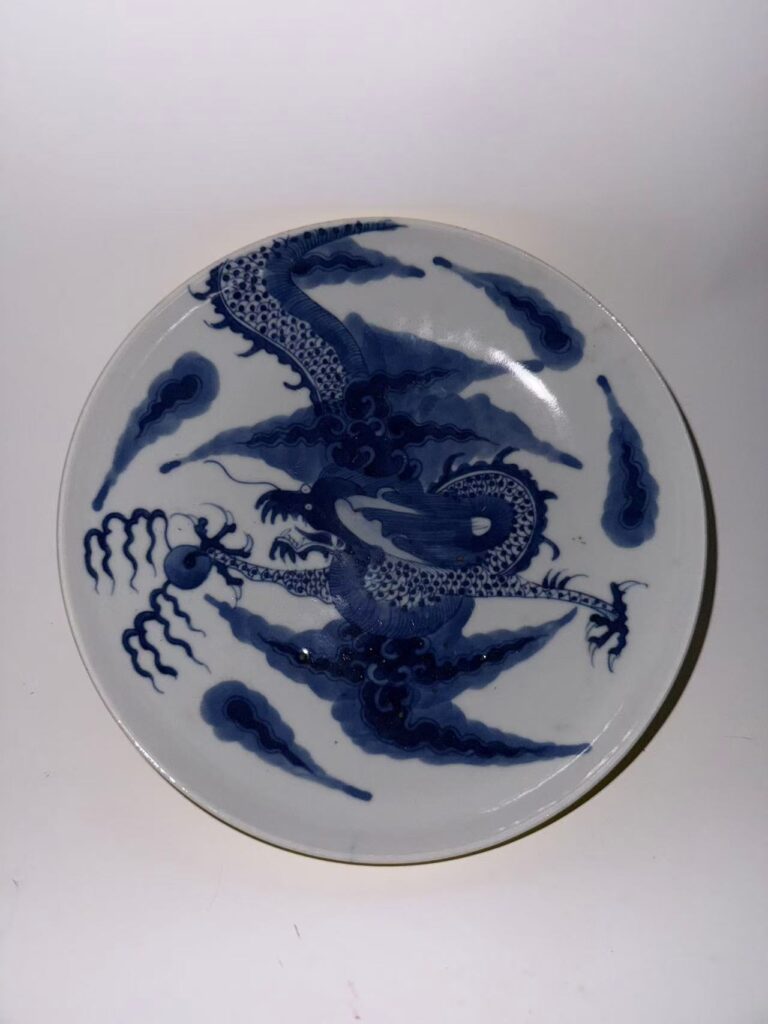
清代道光 青花過牆龍紋碟 | 御窯遺珍 龍騰瑞氣
【藏品概述】
本品為清代道光年間(1821-1850年)青花瓷器經典之作,碟形端正,胎質細膩堅致,釉面瑩潤如玉。盤心以青花繪製騰雲駕霧之矯龍,龍身蜿蜒盤旋,穿過盤沿延伸至外壁,形成獨具特色的「過牆龍」紋樣,展現清代中期禦窯製瓷的精湛技藝與皇家審美。青花发色濃艷明快,深淺層次分明,為研究清代道光朝青花工藝及龍紋演變提供了珍貴實物佐證。
【工藝解析】
1. 胎釉精細 質感卓絕
碟體採用高嶺土與瓷石混合胎料,經多次淘洗提純,胎質緊密細膩,上手輕薄適中。釉面施以透明青白釉,經高溫燒制後瑩潤透亮,白中泛青,與青花之色形成經典「青白相映」之韻,釉面開片細密自然,歷經近兩百年時光仍保持完好。
2. 青花繪製 層次豐富
青花料選用優質浙料,发色濃郁穩定,呈現深藍帶紫的「宣青」風韻。繪畫技法上結合「分水皴」與「點染」,龍鱗以細密網紋勾勒,層層暈染顯立體;龍爪張揚有力,指尖銳利如鉤;龍須纖細飄逸,隨雲氣動態自然。雲朵紋樣以流暢線條勾勒輪廓,內部填色深淺變化,營造雲霧翻騰之勢。
3. 過牆龍紋 匠心獨運
「過牆龍」為明清官窯經典紋樣,寓意「龍騰四海,氣貫長虹」。本品龍身從盤心延伸至盤沿,穿過器壁連接外壁紋飾,構圖需「盤內盤外一氣呵成」,對畫師構圖能力與燒制穩定性要求極高——稍有偏差便會導致紋樣斷裂或變形。此碟龍身過渡自然,線條連貫無礙,足見當時工匠技藝之嫻熟。
【紋樣寓意】
龍為中國傳統文化中最高祥瑞之獸,象徵權威、尊貴與吉祥;過牆龍紋更蘊含「飛龍在天,福澤綿延」之意,舊時多見於皇宮貴族用器,寄寓國泰民安、權勢永固。盤中祥雲環繞,與龍紋相輔相成,寓意「雲從龍,風從虎」,天地和諧,福祿雙全。
【歷史與收藏價值】
道光朝處於清代中晚期,青花瓷器延續乾隆、嘉慶時期的精緻風格,同時呈現出簡約端莊的時代特徵。過牆龍紋作為明清官窯標誌性紋樣,歷來為藏家所重。本品造型規整,紋飾清晰,青花发色與繪畫工藝均屬同期上乘,若保存完好(具體品相請參考細節圖),實為清代中晚期青花瓷器收藏之佳品,適合置於書房陳設、古董櫥展示,或作為東方藝術收藏體系中的重要組成部分。
【藏品規格】
-
年代:清代道光年間(1821-1850年)
-
材質:高嶺土瓷胎,青花釉下彩
-
器型:敞口淺腹碟
-
備註:具體尺寸、底款及品相細節請參考圖片或諮詢客服
【收藏與保養建議】
-
避免劇烈震動或碰撞,防止釉面開片擴大或胎體損傷
-
存放於乾燥、通風環境,遠離陽光直射及潮濕場所
-
清潔時用柔軟乾布輕拭,禁用化學清潔劑或硬毛刷
-
作為古董藏品,建議搭配防塵玻璃罩陳設,既保護藏品又便於觀賞
VirtuCasa 承諾:所有古董藏品均保真來源,圖片拍攝無修飾,呈現藏品真實狀態。如需更多細節圖或專業鑒定意見,歡迎隨時聯繫我們的藝術顧問團隊。
注:本品為古董藏品,可能存在時代使用痕跡,具體以實物為準。收藏古董不僅是投資,更是對東方千年文化藝術的傳承與珍視。

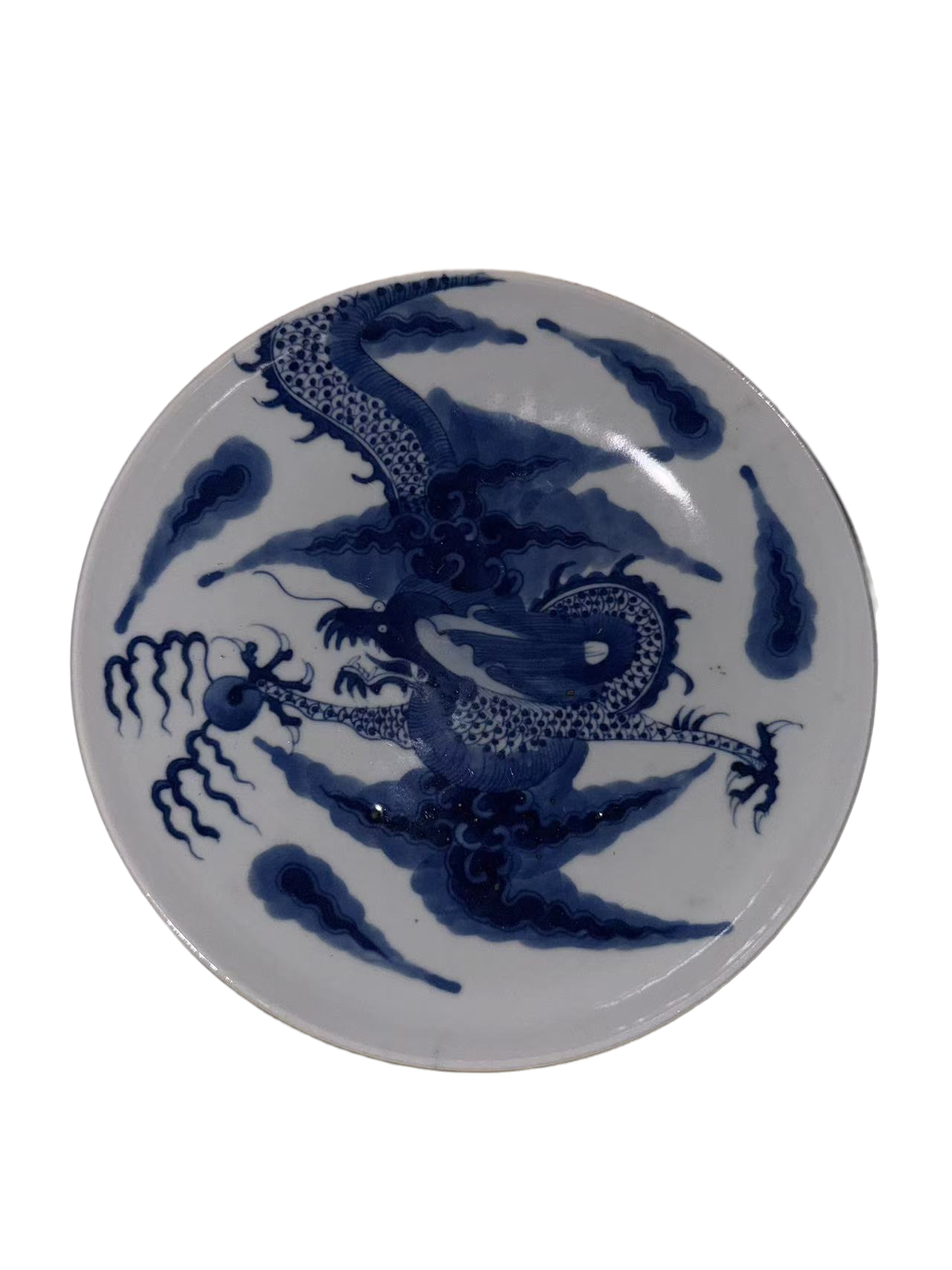
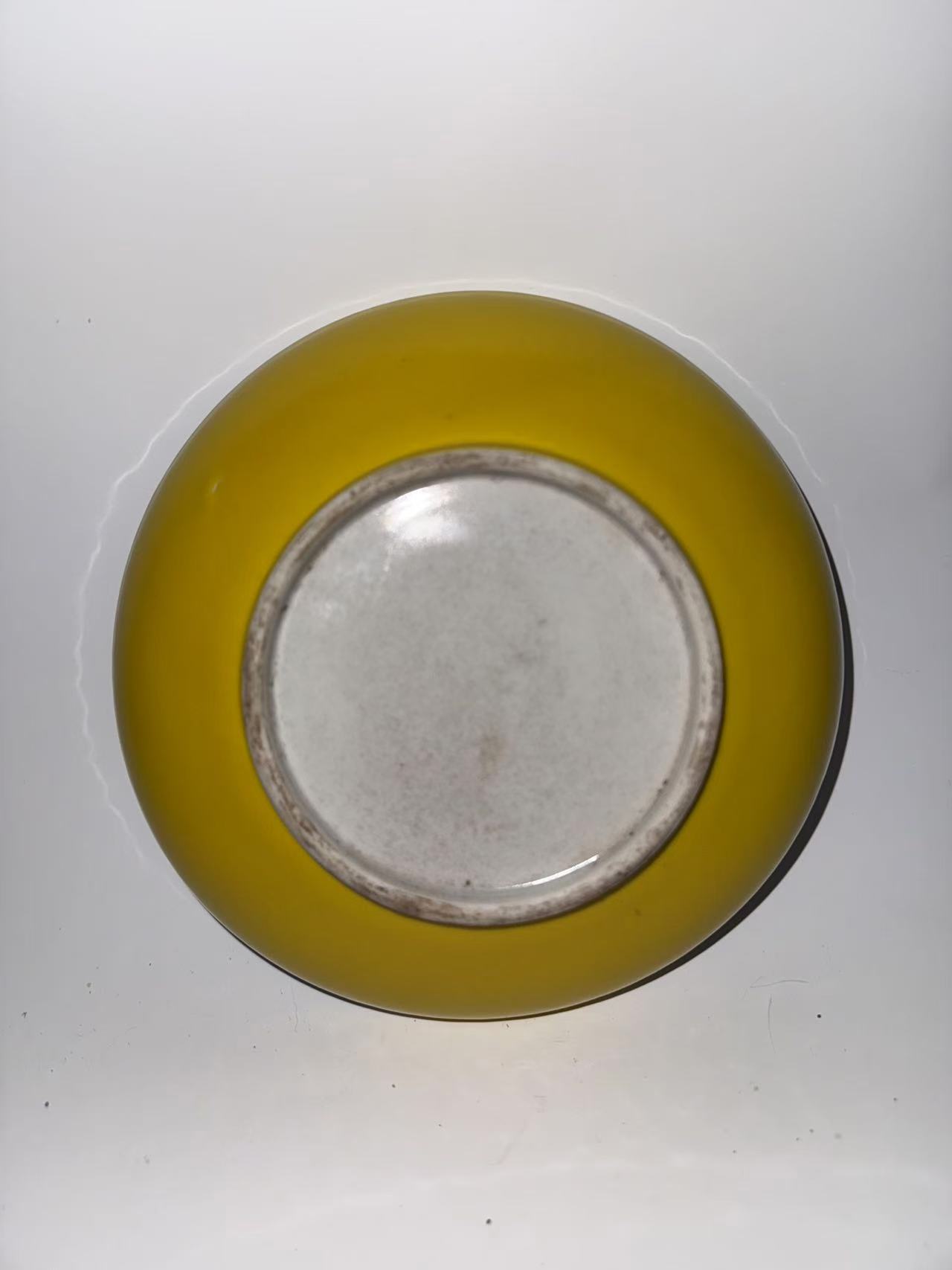
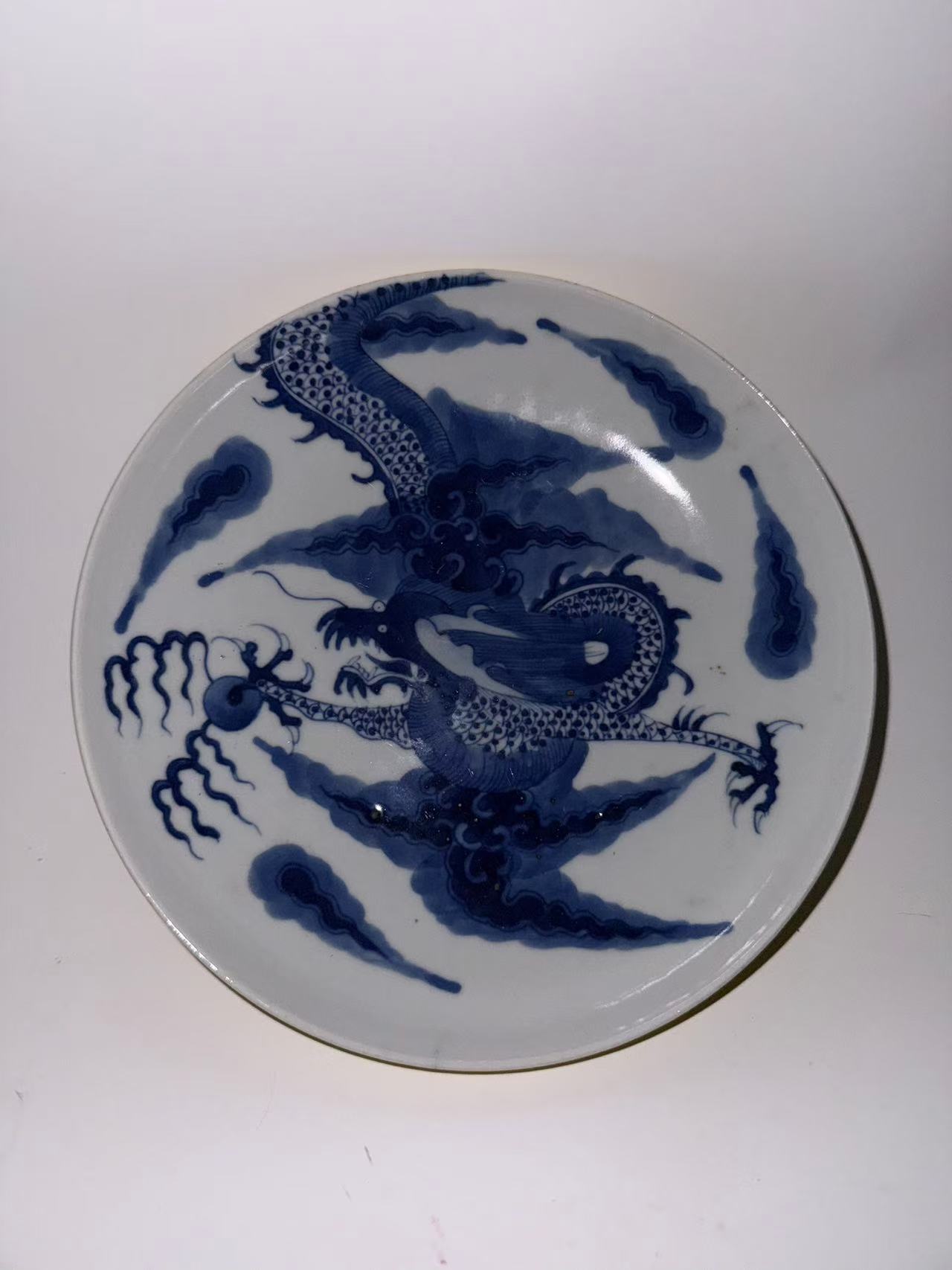

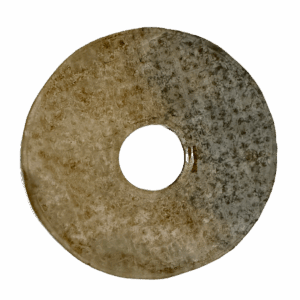
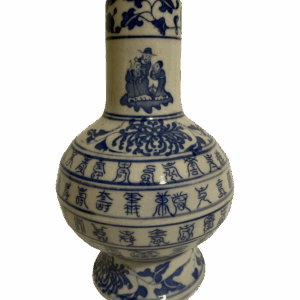
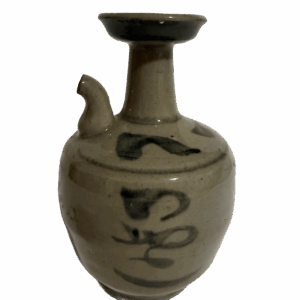
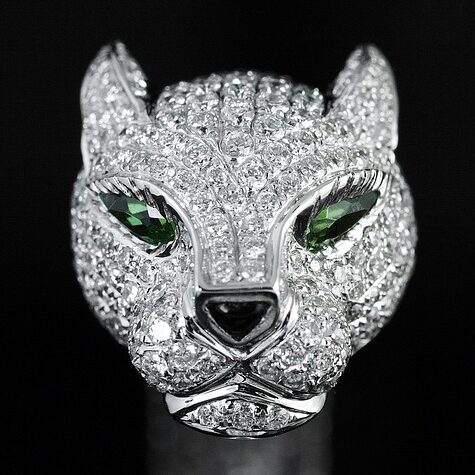
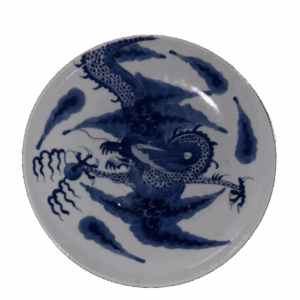
Reviews
There are no reviews yet.